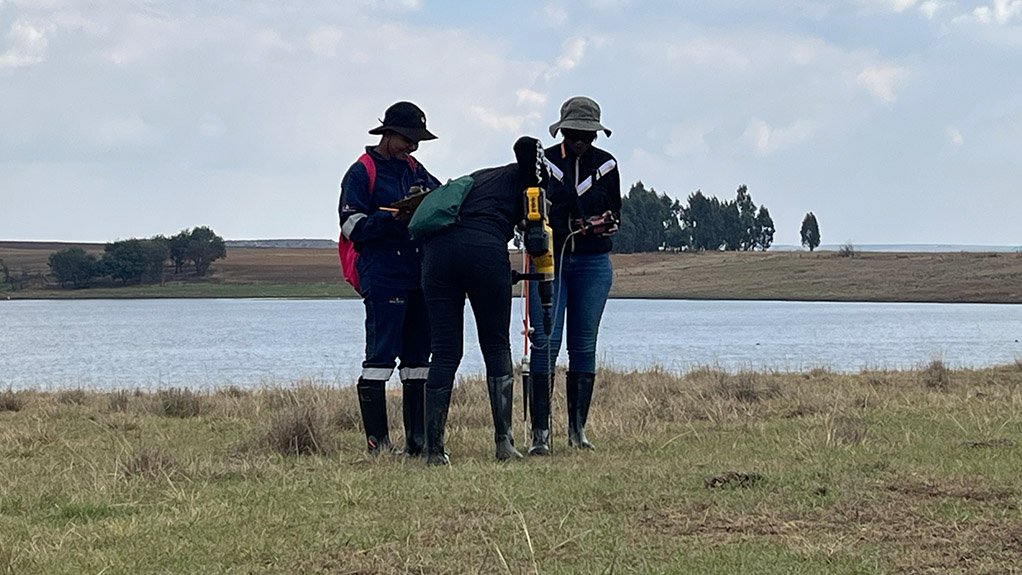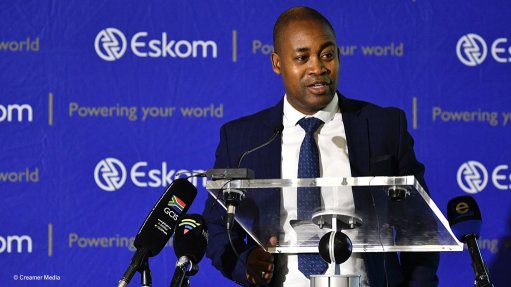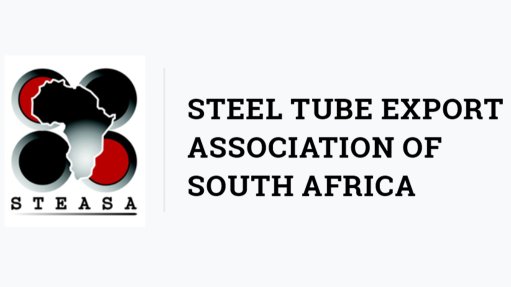UP scientists lead study of natural hydrogen find in Mpumalanga
Scientists at the University of Pretoria (UP) are leading a study of natural hydrogen gas discovered beneath the Earth’s surface in Mpumalanga.
The gas could be a source of renewable energy that could contribute to the national energy budget and help address the energy shortage in South Africa, the researchers note.
While it is still too early to know how much of an effect the discovery could have on the country’s national energy landscape if exploited, the scientists have envisaged small standalone generation units, powering generators with a capacity of about 20 kW, for local domestic or minor industrial use.
“There might well be an untapped renewable, non-polluting energy supply that has gone unnoticed for centuries, right under our noses. Only in the past few years have geoscientists started to measure natural hydrogen flux out of the Earth, and we have already demonstrated that this is the case in parts of Mpumalanga.
“Our local scientists, with their geological and geophysical knowledge of the potential source rocks, combined with the expertise of our European partners, are proving to be a successful team,” structural geologist Professor Adam Bumby says.
He adds that they are in the process of identifying potential source sites, after which they will be able to quantify estimated resources.
“The role of this project is to indicate the presence of hydrogen and how it could be incorporated into the national energy budget if it were to be exploited,” he explains.
This discovery was made as part of the HyAfrica project undertaken by a consortium of partners within the European Union (EU) and the African Union (AU).
Recent samples taken in Mpumalanga currently fall under the natural or white hydrogen category. Follow-up field trips and isotopic comparisons of all the hydrogen samples collected will provide a clearer understanding of the geological controls responsible for generating hydrogen in Mpumalanga.
Bumby says it is difficult to estimate at this point how long it will take to properly exploit any decent reserves of hydrogen.
He adds that hydrogen is considered a fuel of the future owing to its potential to generate zero emissions, depending on the type of hydrogen that is produced.
“It can be used, for instance, in car engines instead of petrol, producing water as the exhaust gas. Hydrogen is the most common element in the solar system, but sadly most of it is either sitting or burning in the sun. Hydrogen can also be synthesized from water using electrolysis, but it requires a lot of energy to split water,” he explains.
The energy to produce hydrogen fuel by electrolysing water can be sourced from renewable sources, such as solar energy or wind turbines, resulting in green hydrogen. The energy needed for electrolysis can alternatively be sourced by burning fossil fuels to produce grey hydrogen, where the burning of fossil fuels produces carbon dioxide (CO2) – a greenhouse gas (GHG). If that GHG is captured and stored, it results in blue hydrogen.
Natural white hydrogen is different because the energy needed to separate the hydrogen atoms from the oxygen atoms in water is provided by natural geological processes through chemical reactions in rocks, driven by high temperatures at depth in the Earth’s crust – a process called serpentinisation.
The decay of radioactive elements in some minerals deep within the Earth’s crust can also result in hydrogen being split off from water – a process called radiolysis.
“Because these reactions and processes are occurring relentlessly in some geological environments, the hydrogen that is produced by these natural processes can be considered renewable.
“Because hydrogen is a very light element, it readily rises towards the Earth’s surface, where it either gets trapped under impermeable rock layers or leaks up to the surface. It is these leaks of natural hydrogen that we are trying to trace in Mpumalanga for this part of the HyAfrica project,” Bumby explains.
He adds that environmentalists and climate change activists might also be interested in the potential impact of the development of natural hydrogen as a commodity in South Africa.
“In other areas where hydrogen has been exploited in the past, the extraction of natural hydrogen typically requires drilling a borehole and a motor engine adapted to run on hydrogen. No further invasive procedures are envisioned.
“Burning hydrogen in engines does not produce any CO2 or any other GHG that contributes to global warming. The only combustion product is water. If the hydrogen is not exploited, it seeps from the Earth into the atmosphere, reacts with oxygen, and still forms water,” Bumby explains.
The HyAfrica project is tasked with looking for sources of natural hydrogen in Africa and exploring the possibility of using natural hydrogen for standalone renewable energy solutions.
The partners fall under the umbrella of Long-term Joint EU-AU Research and Innovation Partnership on Renewable Energy (LEAP-RE), with the AU partners being in Morocco, Togo, South Africa and Mozambique.
The South African scientific partners in the HyAfrica consortium include UP Department of Geology representatives Bumby and Dr Ansie Smit, UP Graduate School of Technology Management Professor David Walwyn, along with University of Limpopo researcher Samson Masango and Professor Napoleon Hammond.
Other consortium partners are the Université Mohammed Premier, Oujda of Morocco; University of Lomé of Togo; Eduardo Mondlane University of Mozambique; Converge!/University of Évora of Portugal; as well as the Leibniz Institute for Applied Geophysics and the Fraunhofer Institute of Germany.
“There remains a great deal of work ahead for the team to consider necessary regulation and legislation associated with the exploitation of these resources. The later working groups of the HyAfrica project will consider those economic and political aspects,” Bumby says.
Walwyn, who has expertise in the challenges of industrial development in South Africa and the development of green hydrogen as a potential energy source, forms part of this working group. The group kicked off work during the second LEAP-RE HyAfrica general assembly held at UP recently.
Article Enquiry
Email Article
Save Article
Feedback
To advertise email advertising@creamermedia.co.za or click here
Comments
Press Office
Announcements
What's On
Subscribe to improve your user experience...
Option 1 (equivalent of R125 a month):
Receive a weekly copy of Creamer Media's Engineering News & Mining Weekly magazine
(print copy for those in South Africa and e-magazine for those outside of South Africa)
Receive daily email newsletters
Access to full search results
Access archive of magazine back copies
Access to Projects in Progress
Access to ONE Research Report of your choice in PDF format
Option 2 (equivalent of R375 a month):
All benefits from Option 1
PLUS
Access to Creamer Media's Research Channel Africa for ALL Research Reports, in PDF format, on various industrial and mining sectors
including Electricity; Water; Energy Transition; Hydrogen; Roads, Rail and Ports; Coal; Gold; Platinum; Battery Metals; etc.
Already a subscriber?
Forgotten your password?
Receive weekly copy of Creamer Media's Engineering News & Mining Weekly magazine (print copy for those in South Africa and e-magazine for those outside of South Africa)
➕
Recieve daily email newsletters
➕
Access to full search results
➕
Access archive of magazine back copies
➕
Access to Projects in Progress
➕
Access to ONE Research Report of your choice in PDF format
RESEARCH CHANNEL AFRICA
R4500 (equivalent of R375 a month)
SUBSCRIBEAll benefits from Option 1
➕
Access to Creamer Media's Research Channel Africa for ALL Research Reports on various industrial and mining sectors, in PDF format, including on:
Electricity
➕
Water
➕
Energy Transition
➕
Hydrogen
➕
Roads, Rail and Ports
➕
Coal
➕
Gold
➕
Platinum
➕
Battery Metals
➕
etc.
Receive all benefits from Option 1 or Option 2 delivered to numerous people at your company
➕
Multiple User names and Passwords for simultaneous log-ins
➕
Intranet integration access to all in your organisation



















